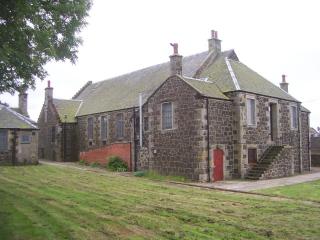Scotland's Rural Village Halls: Present And Future
Published on 9 February 2009 in Sustainability and Communities
Introduction
Rural community facilities, or village halls, are an important part of the social fabric of rural Scotland. These halls often form the hub of rural villages and scattered communities, and Scottish Government therefore recently commissioned a study of the current condition and usage of such facilities.
For the first time, we now have a picture of Scotland's rural village halls based on 322 survey responses from Shetland to Stranraer. The findings will inform future thinking and decisions about the sustainability of this vital rural asset.
Key Points
The research focused on five themes so that we could assess the future prospects for rural village halls. These themes were: the condition and maintenance of the buildings; their ownership; their management and governance; types of users; and uses to which the village halls are put. All of these are key aspects of sustainability – that is, the state of the physical and economic resources and well as the levels and types of human input – often voluntary - on which survival depends.
When looking at the condition of the buildings, we found that over two-thirds of those surveyed are more than 50 years old and require improvements to make them either “fit for purpose” and/or to comply with legislation. The surveyed premises were more likely to be adapted for people with mobility problems that for those with hearing or sight disabilities. Further, rising fuel costs inevitably increase running costs; our research showed that the main source of fuel for over two-thirds of village halls is electricity, with only a minority having renewable energy installations and less than half with any energy conservation measures.
Almost four-fifths of the rural community facilities are owned by local communities, with the majority of management committees having difficulty in recruiting and retaining volunteers. Most committees meet quarterly, however 25% of them meeting only once or twice a year. In addition – and particularly critical for sustainability – less that one fifth of respondent committees had prepared a business plan in the past five years, and almost two-thirds had no budget preparation year-on-year. Virtually no committees had received training in business planning, management or governance in the past year, and less than one fifth had been to workshops or networking events. Issues of capacity-building for committees were raised by both the village hall respondents as well as funders, and particularly the funders felt it to be a critical part of village halls’ survival.
The survey showed that village halls serve a wide age-range of people, with over three-quarters being used by young and elderly people, and more than half providing a venue for parents and toddlers. The principal purpose of the facilities appears to be providing a venue for community activities, rather than as a service point for public services (such as library, local authority services, post office, GP).
Research Undertaken
During the period April-October 2008, the main project activities were: (i) a desk review of literature and policy documents; (ii) updating SCVO’s contact database for village halls; (iii) review of funding; (iv) a postal survey (August-September 2008) sent to 861 facilities and completed by 322 respondents; (v) stakeholder interviews with nine funders and advisers; and (vi) detailed case studies of six facilities, including buildings surveys and in-depth interviews.
Policy Implications
The findings from the survey of village halls have implications for policy and practice at various levels – locally through to regional and national organisations – and will affect the future survival of Scotland’s village halls. Firstly, our research showed a need for sharing best practice between hall committees across Scotland, specifically creating opportunities for exchange of practical experiences and advice (e.g. for regulation, compliance) in ways which reduce the need for every committee to start from scratch. Linked with this is an identified need to provide improved support and information relating to: energy conservation and renewables, legislation and regulatory responsibilities, and business and budget planning.
Secondly, given the Scottish Government’s 2008 report Delivering for Remote and Rural Health and 2007 Action Plan Better Health, Better Care, and the findings from this research, there may be scope for innovative ways of providing greater access to health services through village halls. More broadly, it is important to consider whether there could or should be greater partnership between public sector service providers and rural community facilities. Thirdly, village hall committees need to maintain an awareness of their proximity to other service venues and providers that could complement and compete with them, and the implications this has for business planning and their longer-term sustainability. Fourthly, the SRDP Rural Priorities and LEADER may provide opportunities for committees to seek funding for shared rural community facilities. This needs to be explored and promoted.
Author
Sarah Skerratt Sarah.Skerratt@sac.ac.uk
Topics
Sustainability and Communities
Comments or Questions






